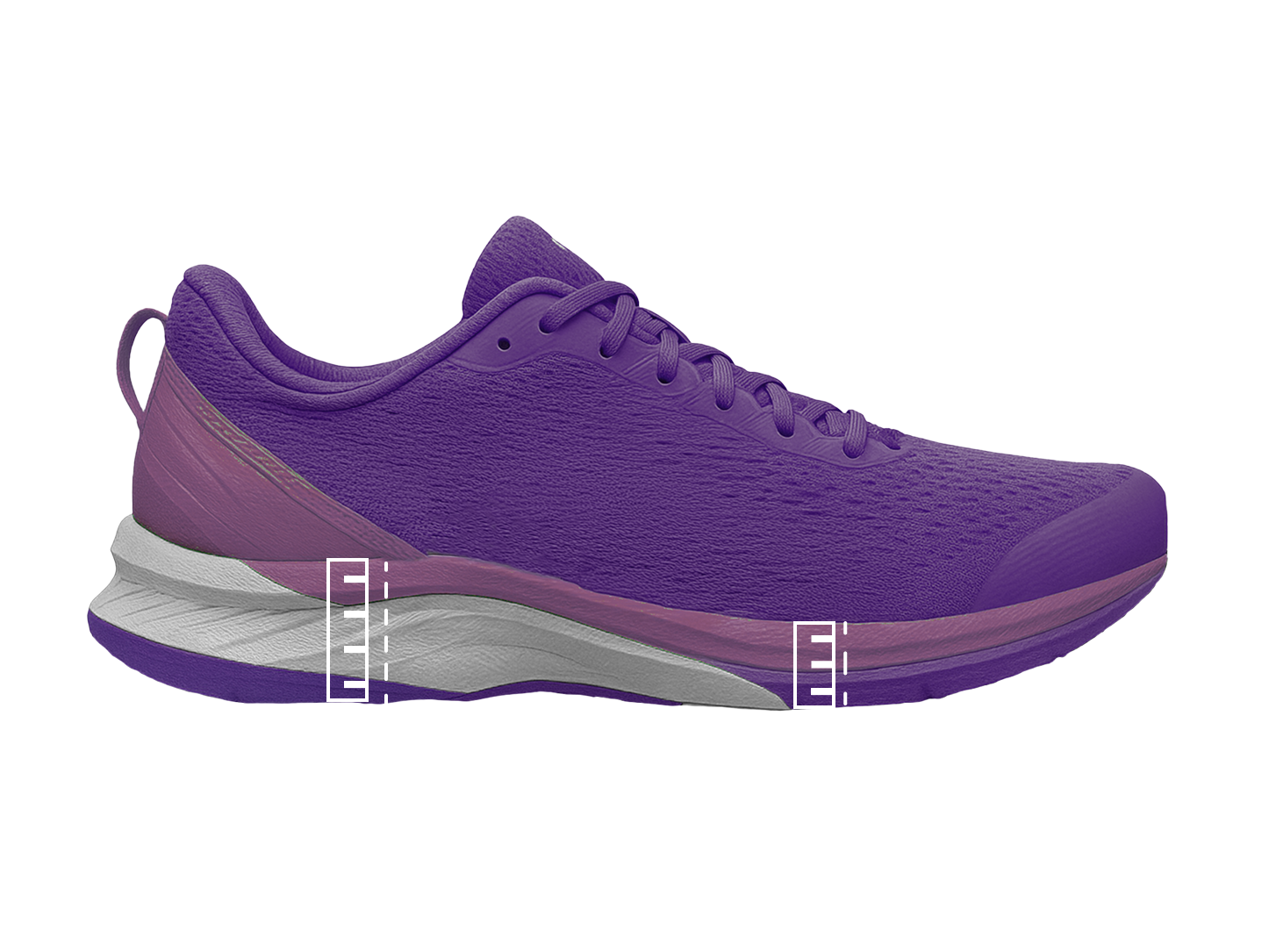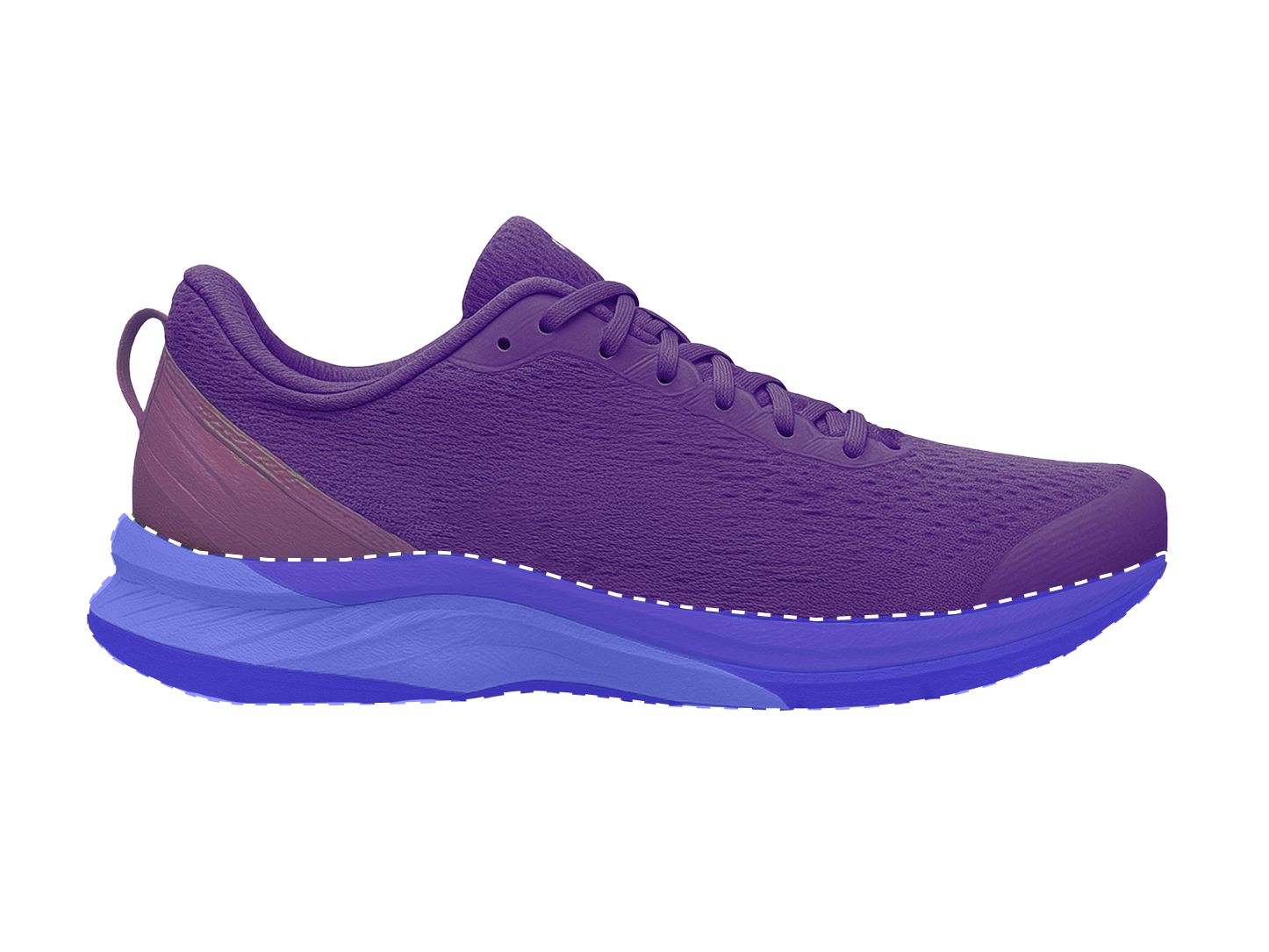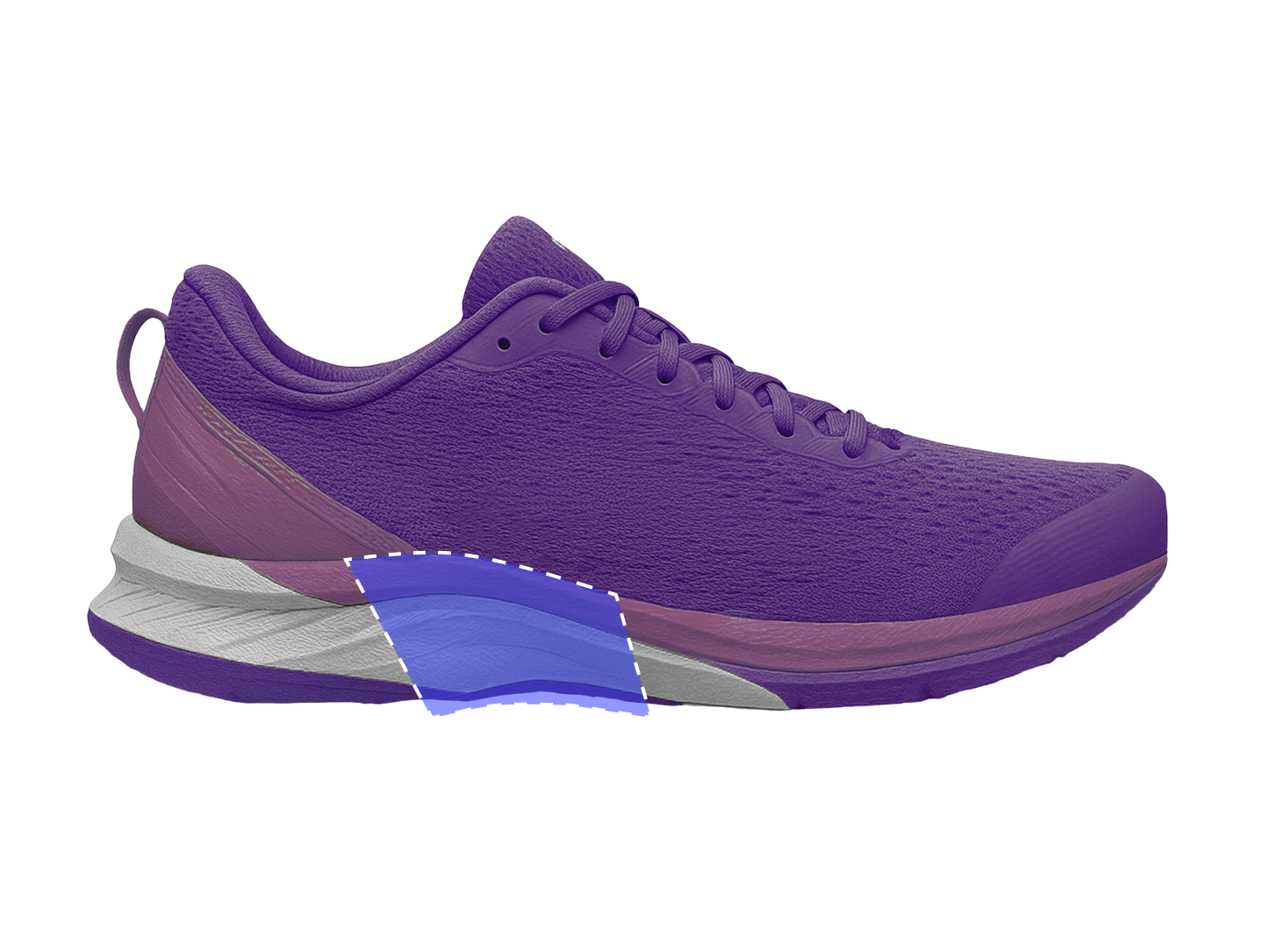.png)
Whether you're a seasoned runner or just getting started, you've probably asked yourself: What are the best running shoes for me? Depending on your training habits, potential injuries, or performance goals, finding the right shoe can feel overwhelming.
Brands often advertise their shoes as more "comfortable," "responsive," or "designed for performance"—but these general claims rarely consider your unique running style and physical needs.
Let’s take a closer look at the key components of a running shoe and eight essential parameters to help you make an informed choice.
Anatomy of a Running Shoe
A running shoe is made up of several layers, each with a specific purpose. Understanding these basic parts can help clarify how different shoe technologies affect your run:
- Upper: The fabric and material that wrap around the top of your foot.
- Sockliner (Insole): The removable layer inside the shoe that provides additional comfort and shape.
- Midsole: The foam or cushioning layer between the outsole and the insole—this is where most of the shoe’s support and responsiveness comes from.
- Outsole: The rubber part that contacts the ground, providing grip and durability.
.png)
Figure 1: Shoe parameters design of running shoes (Mai et al. 2023).
8 Key Running Shoe Parameters
Let’s break down eight important characteristics of running shoes, what they mean, and how they can influence your experience.
1. Midsole Thickness
Midsole thickness refers to how much foam is between your foot and the ground. A thicker midsole generally provides more cushioning, which can help reduce impact forces—particularly on long runs or hard surfaces (Law et al. 2019). However, too much thickness can reduce ground feel and stability (Barrons et al. 2023), which some runners prefer to keep.
Typical Ranges:
- Low: Less than 2 mm
- Medium: Between 2 to 7 mm
- High: More than 7 mm

2. Heel-to-Toe Drop
Often referred to as "heel drop" or "offset," this is the height difference between the heel and the forefoot of the shoe. It usually ranges from 0 mm (minimalist shoes) to 12 mm (traditional trainers) but can also be negative if the front of the shoe is higher than the back.
Typical Ranges:
- None: 0 mm
- Small: Between 4 to 8 mm
- High: More than 8 mm
- Negative: Less than 0 mm

3. Midsole Hardness (or Softness)
This describes how firm or plush the cushioning feels underfoot. Measured using a durometer, the hardness impacts shock absorption (Baltich 2015), energy return (Willwacher et al. 2014), and stability (Dixon et al. 2015; Sterzing et al. 2013).
Typical Ranges:
- Soft: Less than 25 on the Shore A scale
- Medium: Between 25 and 35 on the Shore A scale
- Hard: More than 35 on the Shore A scale

4. Carbon Plate
Many high-performance running shoes now include a carbon fiber plate embedded in the midsole. This plate acts like a lever, increasing propulsion and improving energy efficiency (Beck et al. 2020; Oh & Park 2017; Cigoja et al. 2021), particularly during races.
Stiffness Ratings :
- No plate
- Stiff plate: Between 20 to 40 N/mm
- Very stiff plate: More than 40N/mm

5. Motion Control shoes
Motion control shoes are designed to limit excessive inward rolling of the foot (overpronation) (Alcantara et al. 2018; Kreting & Bruggemann 2006). They include features like medial posts or stiffer heel counters to stabilize the foot during each stride.
Type of shoes:
- Neutral shoes
- Motion control shoes
- Arch support shoes

6. Bending Stiffness
Bending stiffness refers to how resistant a shoe’s sole (mainly the midsole and outsole) is to bending, especially at the forefoot during toe-off (Roy & Stefanyshyn 2006; Day & Hahn 2020; Flores et al. 2019).
Type of shoes:
- Low stiffness: Less than 20 N/mm
- Medium stiffness: Between 20 and 40 N/mm
- High stiffness: More than 40 N/mm

7. Rocker
Rocker shoes are designed with a curved sole that helps the foot roll smoothly from heel strike to toe-off (Munim et al. 2025; Hutchins et al. 2009; Hoitz et al. 2020).
Type of shoes:
- Rocker
- Non-rocker

8. Shoe Weight
Shoe weight corresponds to the mass of the running shoe. It plays a crucial role in how fast, efficient, and comfortable a run feels (Relph et al. 2022; Dinato et al. 2020; Perkins et al. 2014; Khorramroo & Moussavi 2022).
Type of shoes:
- Barefoot
- Light
- Medium
- Heavy

How Do You Choose the Right Shoe?
Understanding these parameters is just the beginning. The best shoe for you depends on a combination of factors:
- Your height and body mass
- Your running level and training load
- Any past or current injuries
- Your preferred comfort level
- Your previous shoes
- Most importantly: your running form
This is where things get complex—but don't worry, we’re working on it!
At Ochy, we’re building a smart recommendation feature to help you find the ideal shoe based on how you run. Stay tuned, and in the meantime, you can download the app to analyze your running form and get personalized feedback:
References
- Law, M., Soo, J., & Menz, H. B. (2019). The effect of running shoe midsole thickness on impact forces and running economy. Journal of Science and Medicine in Sport, 22(8), 921–926.
- Barrons, K., Bishop, C., & Norris, M. (2023). Ground feel and stability in relation to midsole thickness in running shoes. Footwear Science, 15(2), 101–113.
- Baltich, J., Maurer, C., & Nigg, B. M. (2015). The effect of midsole hardness on running biomechanics. Journal of Applied Biomechanics, 31(5), 362–368.
- Willwacher, S., König, M., Braunstein, B., Goldmann, J. P., & Brüggemann, G.-P. (2014). The influence of midsole hardness on energy return and running economy. Footwear Science, 6(3), 159–167.
- Dixon, S. J., Collop, A. C., & Batt, M. E. (2015). Compensatory adjustments in lower limb biomechanics with varying cushioning in running shoes. Medicine & Science in Sports & Exercise, 47(7), 1439–1446.
- Sterzing, T., Schweiger, V., Ding, R., & Cheung, J. T.-M. (2013). Influence of shoe midsole hardness on running kinematics and plantar pressure. Footwear Science, 5(2), 71–79.
- Beck, O. N., Kipp, S., & Kram, R. (2020). Running economy improvement with a carbon fiber plate in shoe midsoles. Sports Medicine, 50(2), 293–302.
- Oh, K., & Park, S. (2017). The role of a stiffened midsole with carbon-fiber plate on running performance. Journal of Biomechanics, 60, 15–21.
- Cigoja, S., Fletcher, J. R., & Nigg, B. M. (2021). Mechanical function of carbon-fiber plates in running shoes. Sports Biomechanics, 20(6), 693–708.
- Alcantara, R. S., et al. (2018). Effects of motion control shoes on running kinematics and overpronation. Gait & Posture, 64, 153–159.
- Kreting, M., & Brüggemann, G.-P. (2006). Stability features of motion control shoes and their impact on overpronation. Footwear Science, 1(1), 17–25.
- Roy, J.-P. R., & Stefanyshyn, D. J. (2006). Shoe bending stiffness and its influence on running mechanics and economy. Journal of Biomechanics, 39(9), 1611–1618.
- Day, E. M., & Hahn, M. E. (2020). Forefoot bending stiffness in footwear and implications for running performance. Footwear Science, 12(2), 123–133.
- Flores, N., Delattre, N., Berton, E., & Rao, G. (2019). Effect of sole bending stiffness on running biomechanics and energetics. European Journal of Sport Science, 19(6), 749–757.
- Munim, M. A., et al. (2025). Biomechanical effects of rocker shoes on running and walking. Footwear Science, 17(1), 45–59.
- Hutchins, S., Bowker, P., Geary, N., & Richards, J. (2009). The biomechanics and clinical effectiveness of rocker-soled shoes. Clinical Biomechanics, 24(1), 84–91.
- Hoitz, F., Mohr, M., & Brauner, T. (2020). Rocker shoes and their impact on gait mechanics in running and walking. Gait & Posture, 77, 269–275.
- Relph, N., Greig, M., & Walker, A. (2022). Running shoe mass and its impact on performance and fatigue. Sports Biomechanics, 21(3), 367–379.
- Dinato, R. C., et al. (2020). Influence of shoe weight on running economy. Journal of Sports Sciences, 38(2), 123–131.
- Perkins, K. P., Hanney, W. J., & Rothschild, C. E. (2014). The influence of shoe weight on running performance and biomechanics. Journal of Strength and Conditioning Research, 28(4), 911–918.
- Khorramroo, S., & Moussavi, Z. (2022). Effects of running shoe weight on efficiency and fatigue. Footwear Science, 14(3), 177–186.